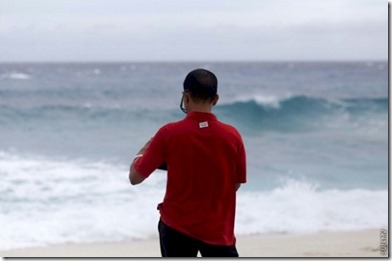Dhivehi Language Day today.
While the Maldives is renowned for romantic islands and underwater reefs, the unique reef bottomology (as opposed to “topology”) has also made it one of the world’s top surfing destination. Not for Hawaiian monsters waves, but for long, gently breaking ones (great for the increasing popular trick riding not to mention beginner learning).
One of the top surf spots is Fuvamulah. So much so that the wave richness has infiltrated their language. Like “snow” to Eskimos and “rice” to Japanese, the Maldivians on Fuvamulah have more words for “wave” than any other language. And like the Eskimos and Japanese, the wave words on not simple straight synonyms, but rather designations for subtle variations.
The Maldivian outlet Sun Online featured a superb piece on the subject titled “Fuvahmulah people could break record for most names for waves!”
“Fuvahmulah has just one and one quarter of miles of reef around the island – resulting in huge ocean waves battering the island unchecked. A wave is not just a wave to the people of Fuvahmulah, who assigned specific names to different types of waves (ralho) – based on their size and the current. This made it easier for the fishermen of the island in the olden days – as they knew just what to do when they heard the name of the type of wave they would be facing that day.”
Eighteen different words have been coined and examples include…
- hudhu ralho – waves that produce more white foam than regular waves
- kalho ralho – waves that break at the point where ocean and lagoon meet.
- vago ralho – waves that appear as if out of nowhere.
- beessaa ralho – waves that do not form curves but flow smoothly toward the beach.
- gunburaas ralho – the biggest waves that break on Bilhifeyshi Olhu


Pingback: QI – 7: Seeing the Blues - Maldives Complete Blog